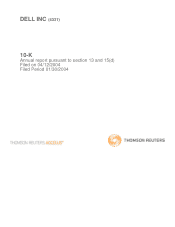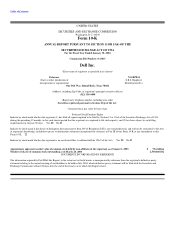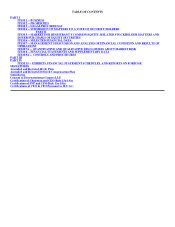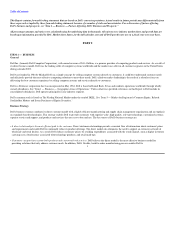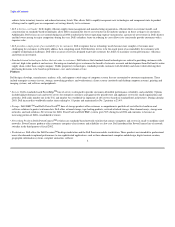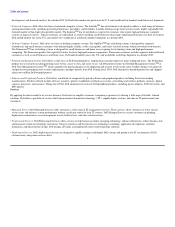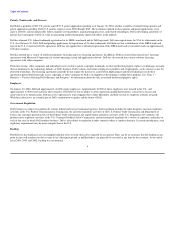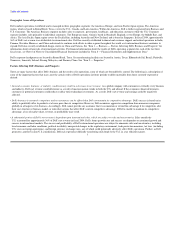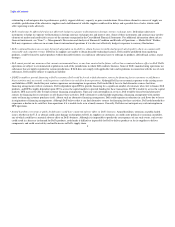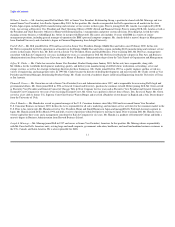Dell 2003 Annual Report Download - page 4
Download and view the complete annual report
Please find page 4 of the 2003 Dell annual report below. You can navigate through the pages in the report by either clicking on the pages listed below, or by using the keyword search tool below to find specific information within the annual report.
Table of Contents
This Report contains forward-looking statements that are based on Dell's current expectations. Actual results in future periods may differ materially from
those expressed or implied by those forward-looking statements because of a number of risks and uncertainties. For a discussion of factors affecting
Dell's business and prospects, see "Item 1 — Business — Factors Affecting Dell's Business and Prospects."
All percentage amounts and ratios were calculated using the underlying data in thousands. All references to industry market share and growth data are
based upon information provided by IDC. Market share data is for the full calendar year and all Dell growth rates are on a fiscal year-over-year basis.
PART I
ITEM 1 — BUSINESS
General
Dell Inc. (formerly Dell Computer Corporation), with annual revenue of $41.4 billion, is a premier provider of computing products and services. As a result of
its direct business model, Dell was the leading seller of computer systems worldwide and the number one seller in all customer segments in the United States
during calendar 2003.
Dell was founded in 1984 by Michael Dell on a simple concept: by selling computer systems directly to customers, it could best understand customer needs
and efficiently provide the most effective computing solutions to meet those needs. Dell's climb to market leadership is the result of a relentless focus on
delivering the best customer experience by selling computer systems and services directly to customers.
Dell is a Delaware corporation that was incorporated in May 1984. Dell is based in Round Rock, Texas and conducts operations worldwide through wholly
owned subsidiaries. See "Item 1 — Business — Geographic Areas of Operations." Unless otherwise specified, references in this Report to Dell include its
consolidated subsidiaries. Dell operates principally in one industry segment.
Dell's common stock is listed on The Nasdaq National Market under the symbol DELL. See "Item 5 — Market for Registrant's Common Equity, Related
Stockholder Matters and Issuer Purchases of Equity Securities."
Business Strategy
Dell's business strategy combines its direct customer model with a highly efficient manufacturing and supply chain management organization and an emphasis
on standards-based technologies. This strategy enables Dell to provide customers with superior value; high-quality, relevant technology; customized systems;
superior service and support; and products and services that are easy to buy and use. The key tenets of Dell's business strategy are:
• A direct relationship is the most efficient path to the customer. Direct customer relationships provide a constant flow of information about customers' plans
and requirements and enable Dell to continually refine its product offerings. The direct model also eliminates the need to support an extensive network of
wholesale and retail dealers. As a result, Dell reduces customers' prices by avoiding expenditures associated with the retail channel, such as higher inventory
carrying costs, obsolescence associated with technology products, and retail mark-ups.
• Customers can purchase custom-built products and custom-tailored services. Dell believes the direct model is the most effective business model for
providing solutions that truly address customer needs. In addition, Dell's flexible, build-to-order manufacturing process enables Dell to
1

